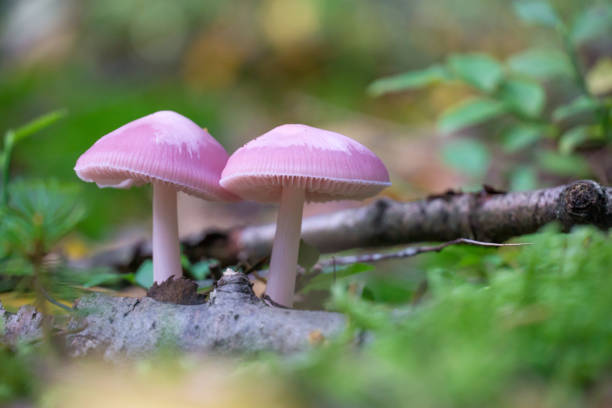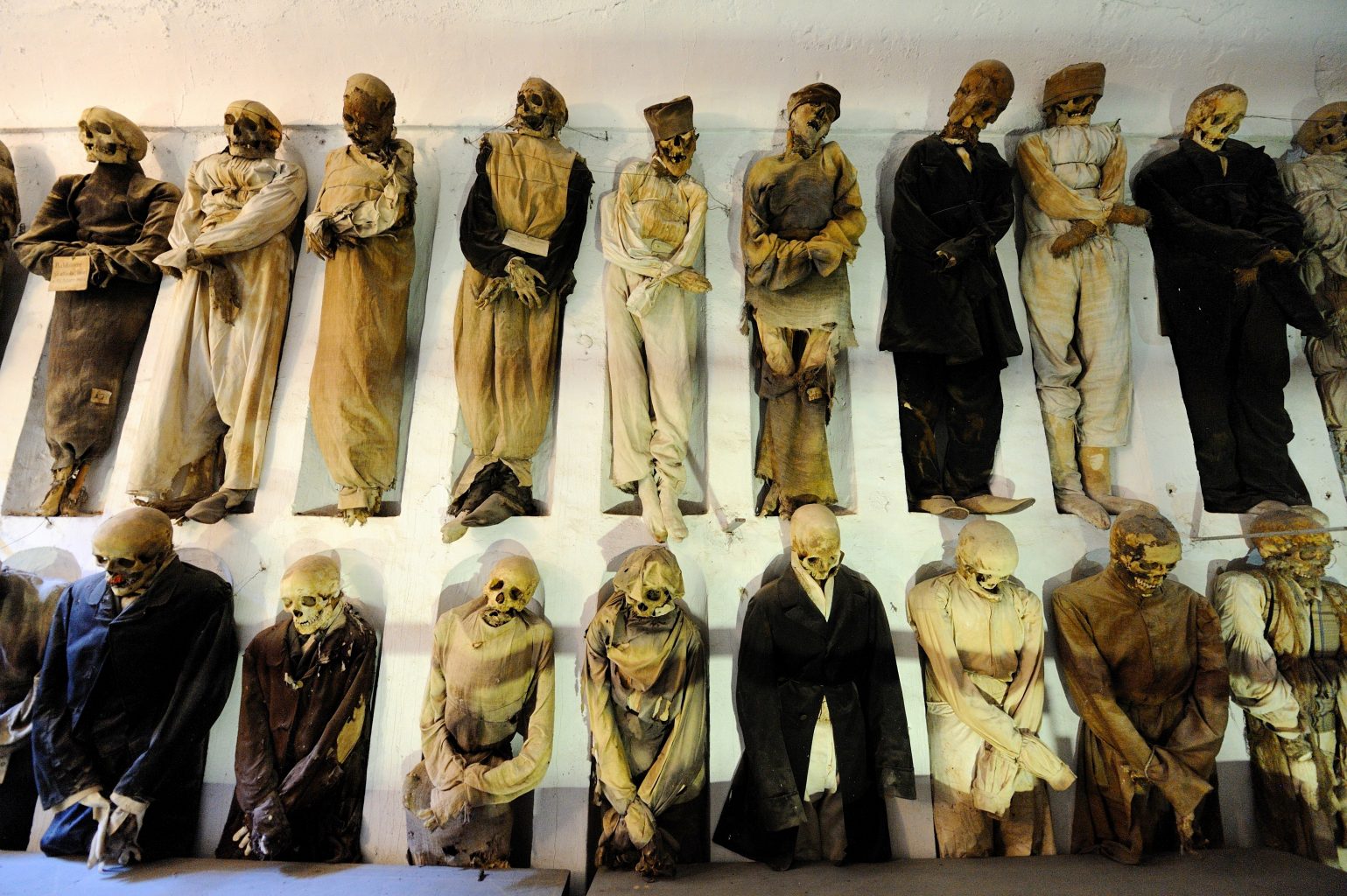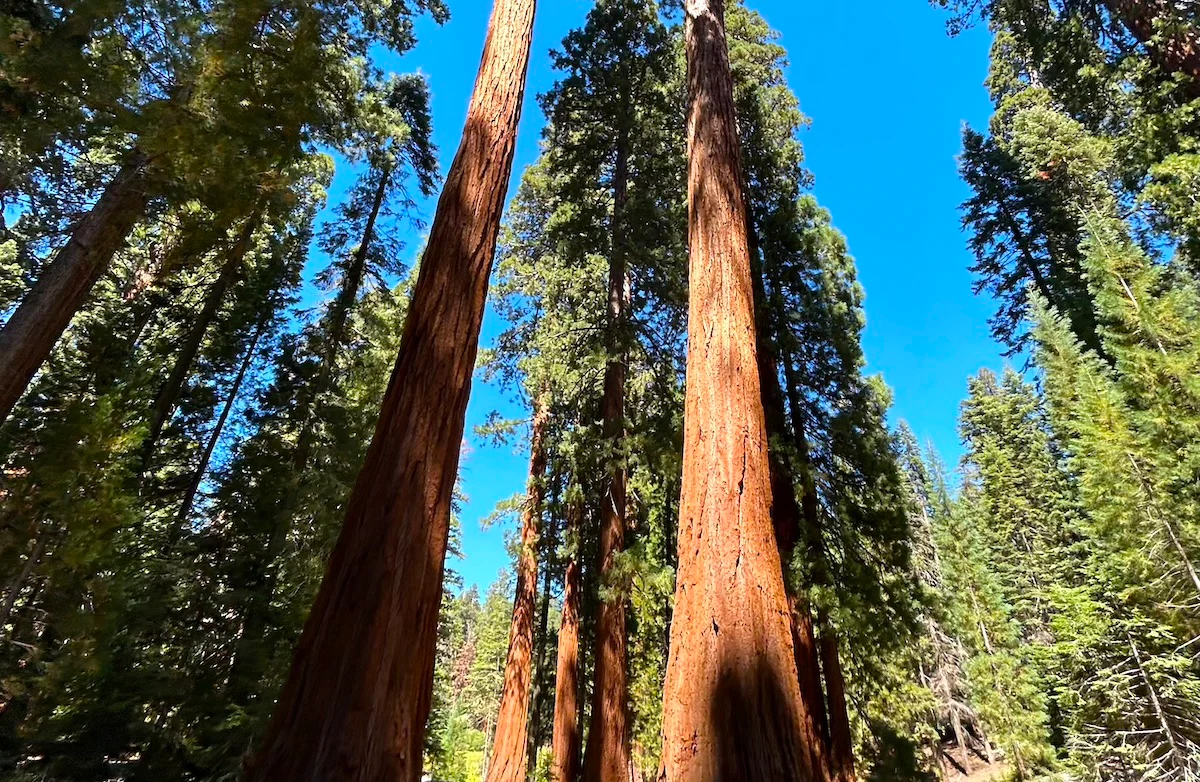Deep in the forests of New Zealand, hidden among the damp, rotting wood, grows a tiny but enchanting mushroom—Mycena roseoflava. Although small in size, this delicate fungus has captivated scientists and nature enthusiasts alike with its vibrant colors and its magical ability to glow in the dark. First described in 1964 by New Zealand scientist Greta Stevenson, Mycena roseoflava continues to be a fascinating subject for study and admiration.
1. A Mushroom with Vibrant Colors
At first glance, Mycena roseoflava might seem easy to overlook due to its small size, with caps measuring only 5 to 10 millimeters wide. However, its unique colors make it stand out in the damp environments where it thrives. The mushroom’s cap starts out a soft pink, which fades to a yellowish hue as it ages. Its smooth to slightly fuzzy texture gives it a delicate appearance, perfect for the wet forests and rainforests of New Zealand where it grows.
The mushroom is often found sprouting from decaying wood and twigs, contributing to the ecosystem by breaking down dead organic material and returning nutrients to the soil. Its presence helps maintain the health of the forest by accelerating the decomposition process, which is vital for the nutrient cycle.
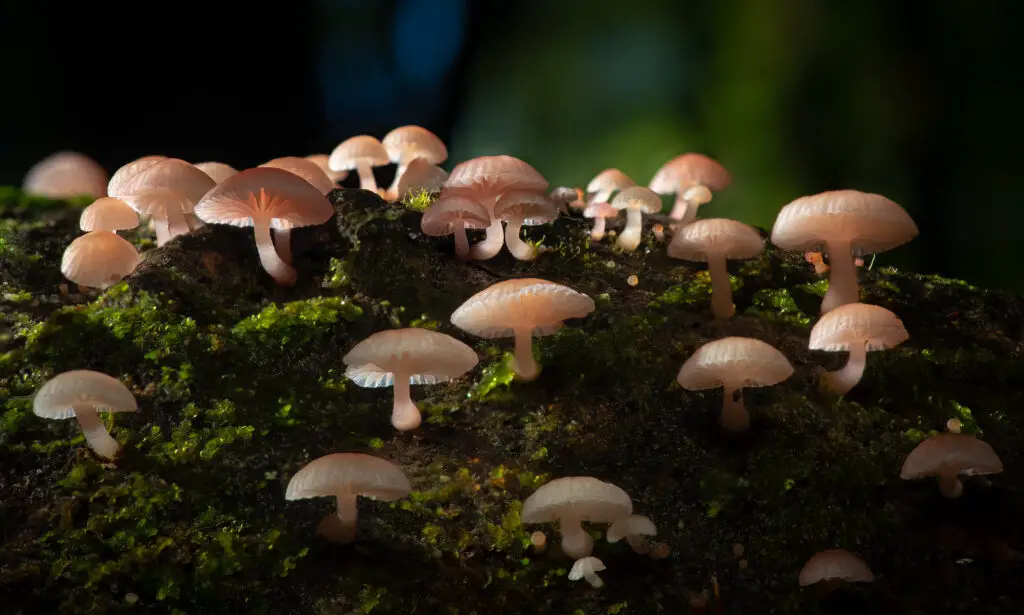
2. A Magical Glow in the Forest
One of the most captivating features of Mycena roseoflava is its bioluminescence—the ability to glow in the dark. This phenomenon, which was discovered as recently as 2021, occurs through a chemical reaction involving luciferin, a light-emitting compound, and enzymes. When these substances interact, they produce a faint but beautiful glow that illuminates the forest floor.
This natural light show gives the forest a magical, almost ethereal atmosphere, especially on dark nights when the mushrooms can be seen glowing faintly among the decaying wood and leaves. The glow serves a functional purpose as well, possibly attracting insects that help spread the mushroom’s spores, further contributing to its role in the ecosystem.
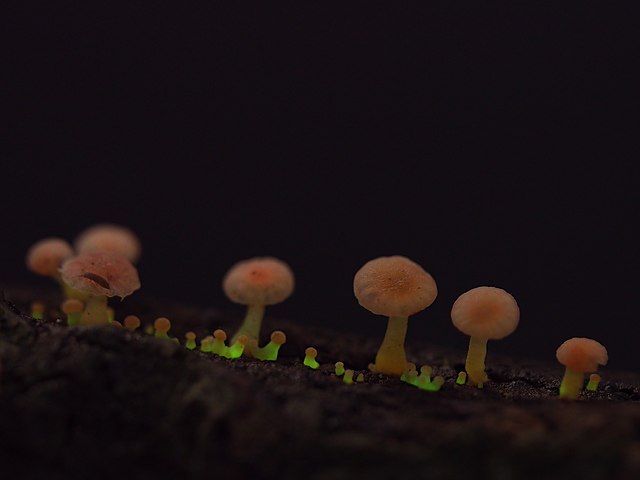
3. Ecological Importance of Mycena roseoflava
Beyond its enchanting glow and delicate appearance, Mycena roseoflava plays an important ecological role. As a saprotrophic fungus, it feeds on dead organic matter, primarily decaying wood. By breaking down this material, the mushroom helps recycle essential nutrients back into the ecosystem, enriching the soil and supporting the growth of plants and other organisms. Without fungi like Mycena roseoflava, the forest floor would be cluttered with unbroken down debris, and nutrient cycling would slow down considerably.
New Zealand’s wet forests, particularly rainforests, provide the perfect habitat for this species, with their abundant moisture and decaying plant material. The presence of these fungi indicates a healthy, thriving ecosystem where every organism, no matter how small, plays a part in maintaining balance.
Conclusion
Mycena roseoflava may be small, but it has a significant impact on both the environment and those who discover it. From its colorful caps that brighten the forest floor to its ethereal glow in the dark, this tiny mushroom offers a glimpse into the wonders of nature. As it quietly contributes to nutrient recycling in the forest, its beauty and bioluminescence remind us of the intricate relationships that sustain life in even the most hidden corners of the world.
Whether you’re a mushroom enthusiast or just a lover of nature’s wonders, Mycena roseoflava is a species worth knowing about—and perhaps one day, if you’re lucky enough, you may even catch a glimpse of its magical glow on a dark, quiet night in New Zealand’s forests.

